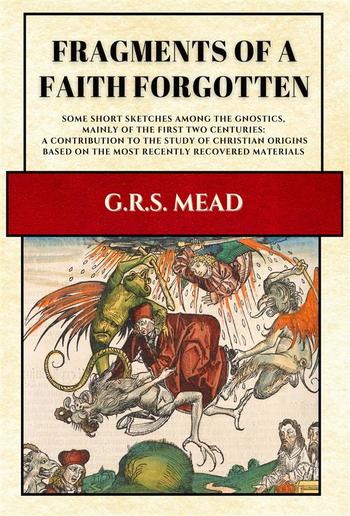
G.R.S. Mead - Fragments of a Faith Forgotten
Fragments of a Faith Forgotten
Some Short Sketches Among The Gnostics, Mainly Of The First Two Centuries: A Contribution To The Study Of Christian Origins Based On The Most Recently Recovered Materials
G.R.S. Mead
Description
G.R.S. Mead was a noted and influential member of the Theosophical Society. He studied the Hermetic and Gnostic religions of Late Antiquity. Mead's huge book—Thrice-Greatest Hermes—is a classic work on the philosophical Hermetica and the figure of Hermes Trismegistus. In this work (Fragments of a Faith Forgotten), he explored various aspects of the early Christian world and gnostic traditions.
EXCERPT:
The familiar story of the origins of Christianity which we have all drunk in as it were with our mothers’ milk, may be said to be almost a part of the consciousness of the Western world. It is interwoven with our earliest recollections; it has been stamped upon our infant consciousness with a solemnity which has repressed all questioning; it has become the "thing we have grown used to." It has upon its side that stupendous power of inertia, the force of custom, against which but few have the strength to struggle. But once let the ordinary man desire to know more about the greatest story in the world, as all its tellers assert, and he must begin the struggle. Previously he has been led to believe not only that the story is absolutely unique, but that it is entirely supernatural. In brief, if he analyses his own understanding of the story he finds it violently divorced from all historical environment, a thing of itself, standing alone, in unnatural isolation. His picture has no background.
Moreover he will find it very difficult to fill in that background, no matter how industriously he may labour. He may read many books on the "Life and Times of our Lord," only to find that for the most part the environment has been made to fit the story and its main features have been taken from it; in brief, he does not feel that he has been put in contact with the natural environment for which he is seeking.
There are of course a few works which are not of this nature, but the general reader seldom hears of them, for they are generally regarded as "dangerous" and "disturbing."
But even if we go deeper into the matter and make a special study of the history of the origins, with the largest of libraries at our disposal, we find that no writer has as yet given us a really sufficient sketch of the environment, and without this it is impossible to have a real comprehension of the nature of infant Christianity and the full scope of its illumination; without it we shall never understand its real naturalness and its vast power of adaptation to that environment.

